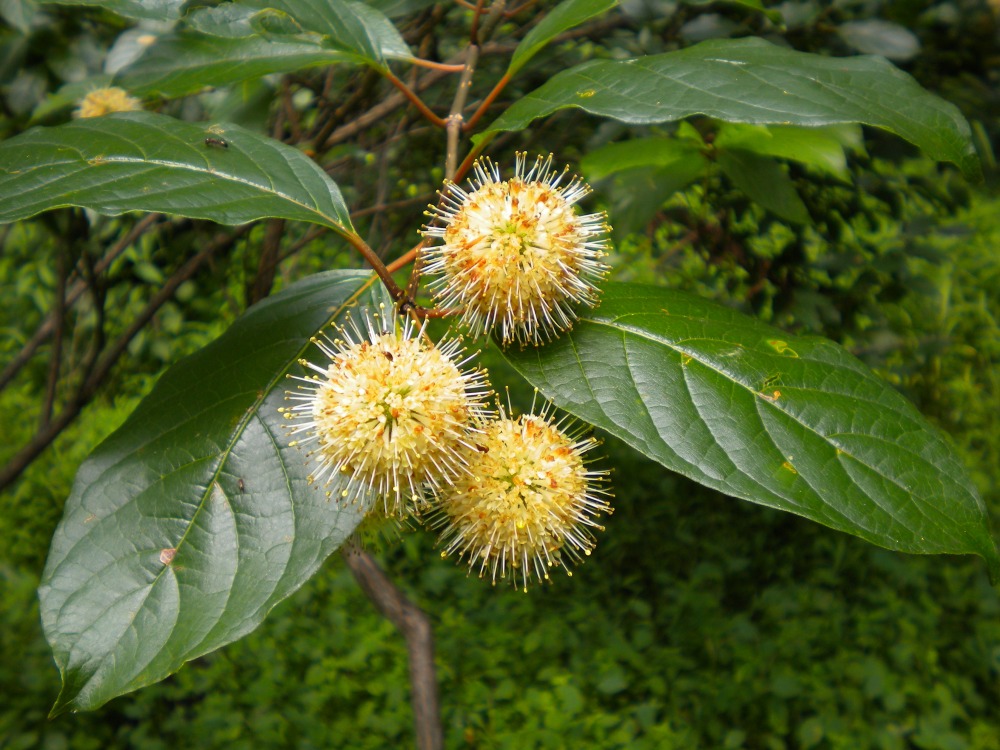Hiking trails crisscross the southern edge of Bull Run Mountain, an area that includes the ruins of Beverley’s Mill (below) and the site of a Civil War skirmish. The 800 acre preserve is maintained by the Bull Run Mountain Conservancy. Bull Run is more a tall foothill than mountain, and the most difficult hikes are only mildly strenuous, but it’s only a few miles from home and more convenient to get to than driving to the Blue Ridge for an afternoon.
I carried my camera along when my wife and I set off on a brief hike Monday afternoon, and in moments I was clicking away at one horticultural gem after another. Just past the start, the trail branches up the incline in one direction, and across a small wetland crossed by a wooden boardwalk to the other. Along the boardwalk a clump of native buttonbush (Cepahalanthus occidentalus, below) growing in the muck was alive with bees and butterflies darting from one spiky globular bloom to the next.
As I teetered on the timber edge, eyeball to eyeball with buzzing bees, I told my wife that buttonbush is on the list of plants that I “must have”, and that I’ve planned to plant a few in a somewhat marshy spot in our garden. As is her habit, she informed me that there is no room for more plants, and of course I countered that there is always space for new treasures.
The sunny lower section of trail parallels railroad tracks and the noisy traffic of Route 66, and leads to the ruins of the mill, icehouse, and house, all of which were constructed of stone quarried a few hundred feet up the mountain. The narrow trail is worn between exuberant patches of mountain laurels, daisies (above), and brambles (below).
The trail then turns up the slope, and under the shade of towering maples and poplars, ferns (below) blanket the damp low ground where small streams carry rain water down the mountain. At a slightly higher elevation the maples and poplars disappear (as well as the highway sounds), replaced by native beech and quiet broken only on occasion by screeching birds high in the forest’s canopy. On the dry slopes there is little understory growth, I assume a result of deer overpopulation, though deer are seen only on occasion.
A violent storm the evening before has damaged trees in the nearby neighborhoods, but in the forest there is strength in numbers, and the only sign of the downpour is washouts of the leaf litter that covers much of the trail. 
The day’s hike is a short one. Another round of thunderstorms is expected in the afternoon, so we make our way back home, where I dash out to the garden to size up the space that I’ve planned for the buttonbush. Sure enough, there’s plenty of space, perhaps enough for three.

